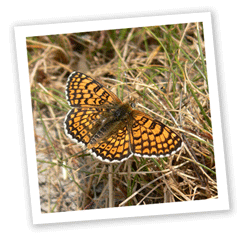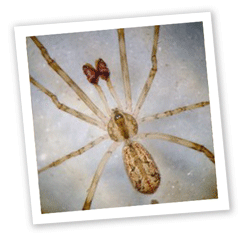|
|
invertebrates
Find out more
The Island has a relatively warm and mild climate which makes it a good location for many invertebrate species.
External links
Dipterists Forum
You don’t need to be an expert, or even to leave your own garden, to contribute to our knowledge of these fascinating insects. Flies need your help!
The Island, as a southern county, has a relatively warm and mild climate which makes it a good location for many invertebrate species. It is also surrounded by sea, and the marine and coastal environment is particularly rich in invertebrate life.
As climate change allows species established on the continent to move their ranges northwards, it is often mobile species such as flying insects which arrive first - and when crossing the English Channel, one of the first landfalls they make is the Isle of Wight. Incidents of of mass immigrations of flying insects from Europe are not unknown, and clouds of peacock butterflies, ladybirds or hoverflies have all been seen coming ashore on the southern coast of the Island in the past.
Glanville Fritillary (Melitaea cinxia)

The Glanville Fritillary in Great Britain is virtually restricted to coastal landslips on the southern half of the Isle of Wight and on the Channel Islands although it is common elsewhere in Europe. The Glanville fritillary spends most of its life as a black, spiny caterpillar. They live in gregarious family groups in characteristic silken webs ("nests") throughout most of their larval stage. When alarmed, a feeding group of Glanville fritillary larvae will jerk their heads in unison, probably to distract their enemies. The orange patterned butterfly lives only a few weeks.
It was named after Lady Eleanor Glanville who was the first to capture British specimens in Lincolnshire during the 1690s. Lady Glanville collected large numbers of butterfly specimens, many of which survive as some of the earliest specimens kept in the Natural History Museum. She would beat the hedges for "a parcel of wormes", neighbours reported. When she died, her children attempted to overturn her will because she was thought to be insane because of her hobby.
Starlet Sea Anemone (Nematostella vectensis)

This tiny greyish-white anemone is up to 40mm long and 2mm diameter, usually about 15mm x 1mm. It is transparent, more or less patterned with white and has a bulbous central section with a contracting column that enables it to burrow into soft mud. At the top of the column is a disk that contains the mouth and is surrounded by two rings of very long tentacles, totaling 16 to 20. It lives in saline coastal lagoons, and is known from several counties, the Isle of Wight, Dorset, Hampshire, Sussex, Suffolk and Norfolk, although it has become extinct in several localities as a result of loss of habitat and pollution. Its name 'vectensis' comes from 'Vectis', the roman name for the Isle of Wight, where it was first found.
Thereidiid
spider (Episinus maculipes)
This tiny spider was first found in the UK on
the Undercliff near Ventnor, and has since been found in only seven other
locations in the country, all within a few miles of the coast. It makes
its web on shrubs and bushes at night time, and is rarely seen during the
day.
| home | partnership | habitats | species | biodiversity opportunity areas | benefits of biodiversity |
biodiversity & you | advice | walks & events | library | contact |